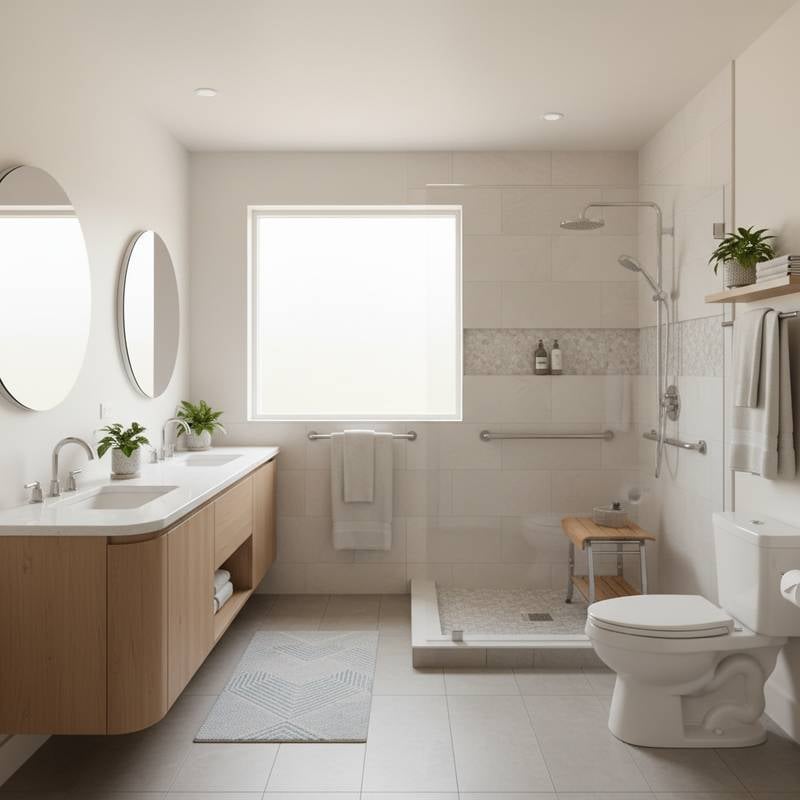Understanding ADU Costs in 2025
Accessory dwelling units, or ADUs, provide homeowners with versatile spaces such as guest houses, rental properties, or home offices. In 2025, building an ADU demands careful financial planning due to rising material prices and regulatory requirements. Costs typically span from $160,000 to $330,000, depending on location, size, and design complexity.
This range reflects national averages, but local variations can shift expenses significantly. Homeowners must consider not only upfront investments but also long-term benefits like increased property value. Early budgeting helps avoid surprises during construction.
Key Factors Driving ADU Expenses
Several elements determine the final price tag for an ADU project. Site conditions play a major role; uneven terrain requires additional grading and foundation work, adding thousands to the bill. Urban areas often face higher labor rates and stricter zoning laws compared to rural settings.
Design choices influence costs as well. A simple, single-story unit keeps expenses lower, while multi-level structures or custom features like large windows increase material and engineering needs. Size matters too; units under 500 square feet tend toward the lower end of the spectrum, whereas larger ones approach $330,000.
Material selections further impact the budget. Standard framing and siding materials hold costs steady, but opting for energy-efficient options such as insulated concrete forms elevates prices by 10 to 20 percent. Homeowners should weigh durability against initial outlay for the best value.
Detailed Cost Breakdown
Permits and Regulatory Fees
Securing approvals forms the first hurdle in any ADU build. Permit fees average $5,000 to $15,000, varying by municipality. These cover zoning reviews, environmental assessments, and utility connections.
Compliance with building codes ensures safety but adds layers of inspection costs. In high-density areas, impact fees for infrastructure strain can reach $20,000. Planning ahead with local authorities streamlines this process and prevents delays.
Site Preparation and Foundation
Preparing the site involves clearing, excavation, and utility setup, costing $10,000 to $30,000. Soil testing identifies issues like poor drainage, which may necessitate reinforcements. Foundations, whether slab or crawl space, add $15,000 to $40,000 depending on the unit's footprint.
Challenges such as rocky soil or slope grading can double these figures. Professional surveys prevent costly errors at this stage. A solid foundation supports the entire structure and protects against future settling.
Structural and Framing Elements
The core build, including walls, roof, and framing, ranges from $50,000 to $100,000. Wood framing remains popular for its affordability, but steel alternatives suit seismic zones better at a premium. Roofing choices, from asphalt shingles to metal panels, affect both cost and longevity.
Windows and doors contribute $10,000 to $25,000, with energy-rated models offering savings on utilities later. Electrical and plumbing rough-ins add another $15,000 to $30,000, ensuring modern functionality. These elements form the skeleton of a durable ADU.
Interior Finishes and Systems
Finishing the interior brings the space to life but accounts for 30 to 40 percent of total costs, or $40,000 to $80,000. Drywall, flooring, and cabinetry provide basic comfort, while upgrades like hardwood floors or custom kitchens push expenses higher.
HVAC systems, essential for year-round use, cost $8,000 to $15,000. Appliances and fixtures round out the budget, with energy-efficient models qualifying for rebates in many areas. Thoughtful selections balance aesthetics with practicality.
Exterior and Landscaping Touches
Exterior work, including siding and painting, totals $15,000 to $35,000. Landscaping integrates the ADU into the property, adding $5,000 to $10,000 for pathways and planting. These features enhance curb appeal and usability.
Weatherproofing protects against elements, extending the unit's lifespan. Simple designs minimize maintenance while maximizing outdoor flow. Integration with the main home creates a cohesive property.
Budgeting Strategies for Your ADU Project
Start with a detailed cost estimator tool or consult a professional for accurate projections. Allocate 10 to 15 percent of the budget for contingencies, as unforeseen issues like supply chain delays arise. Phased construction allows spreading payments over time.
Compare quotes from multiple contractors to secure competitive rates. Financing options, such as home equity loans, cover large sums without depleting savings. Track expenses with spreadsheets to maintain control throughout the build.
Ways to Reduce Costs Without Compromising Quality
Opt for prefabricated components, which cut labor by up to 20 percent. These modular units assemble quickly on-site, reducing overall timelines. Standard designs avoid custom engineering fees.
Source materials locally to lower transportation costs. Energy incentives from utilities offset investments in solar panels or efficient insulation. DIY elements, like painting or landscaping, suit skilled homeowners but require caution to meet codes.
Collaborate with architects early to optimize layouts for cost efficiency. Value engineering refines plans by substituting high-end features with reliable alternatives. These steps preserve quality while fitting within tighter budgets.
Maximizing Return on Your ADU Investment
ADUs boost property values by 20 to 30 percent in many markets, offering strong ROI through rentals or family use. Rental income potential averages $1,500 monthly, recouping costs over 10 to 15 years. Tax benefits, including deductions for home improvements, enhance financial appeal.
Long-term, ADUs support aging in place or multigenerational living, adding practical value. Market trends favor flexible spaces, increasing resale prospects. Strategic planning turns this investment into a lasting asset.
Plan Your ADU Build for Success
Building an ADU in 2025 requires informed decisions to navigate the $160,000 to $330,000 range effectively. Focus on essential features that align with your goals, from rental income to personal space. With solid budgeting and cost-saving measures, homeowners achieve compliant, high-quality results that elevate their properties.











